One of my great pleasures when walking in Belleek Wood is seeing the red squirrels at play – just one of the many attractions of the recreational forest park that has brought pleasure to generations of Ballina people.
Belleek Wood is a natural amenity that any city or town in the world would be proud to have on its doorstep.
The forest runs along the banks of the River Moy on the northern outskirts of Ballina and is criss-crossed by well-laid out paths and nature trails that are enjoyed by thousands of people every week.
Families, feeding the ducks in the pond, adjacent to the old ice house, is a common sight; and the thrill of seeing one of the Belleek’s growing population of red squirrels at play is always a moment to enjoy.
No matter what day of the week you visit Belleek, you are sure to meet walkers, joggers, and families out for a stroll, enjoying one of the most used natural amenities in Co Mayo.
A magical woodland world
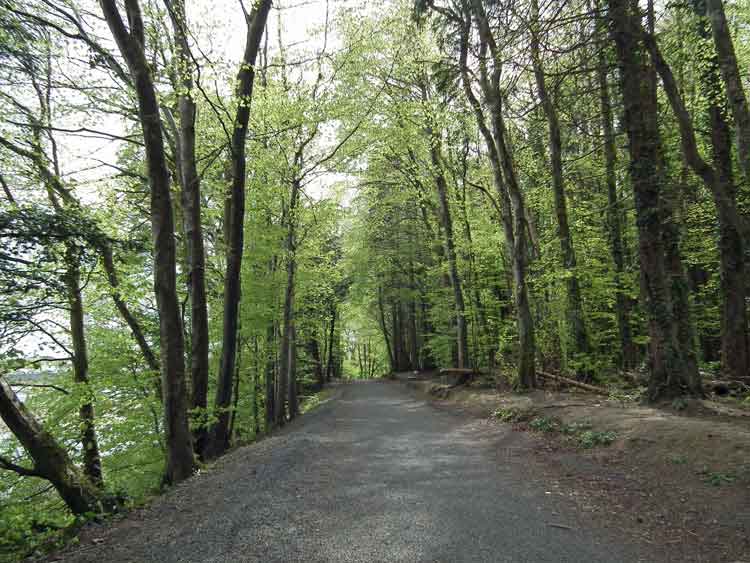
The woodland’s abundant flora and fauna are complemented by the forest’s many historical features and monuments that all have a story to tell – and some unusual tales at that.
For instance, Sir Arthur Francis Knox-Gore, who built Belleek Manor, is buried alongside his beloved horse in a mausoleum in the wood – and then there is the colourful story of the Creteboom, the concrete boat, lying near the riverbank, that goes all the way back to World War 1.
As a Ballinaman, I can vouch for the fact that Belleek Wood has enriched the lives of countless generations of Ballina people.
For Ballina people “going down Belleek” has always meant a Sunday afternoon stroll and an escape from the hustle and bustle of daily life.
And for children, a visit to Belleek has always promised hours of fun and adventure, climbing trees, and exploring imaginary ‘jungle’ paths while looking out for wild animals such as foxes and badgers.
The Castle-like arch, or Gate Lodge, at the entrance to Belleek Wood, off Castle Road, opens the door to a magical woodland world.
And Belleek Manor is the fairy-tale castle at the heart of this wooded paradise. It was built for Sir Francis Arthur Knox-Gore in 1818 and today is a fine hotel, owned by the Doran family, who have strong family ties to the Island of Jersey.
A dramatic riverside setting
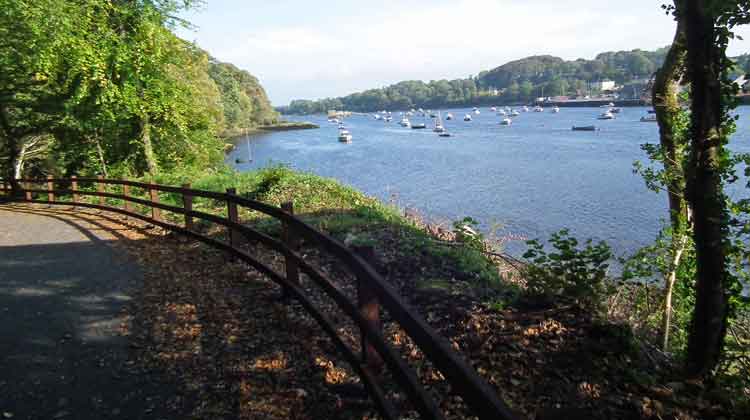
There are many signposted walks and trails in the wood, but the most popular has always been the main path along the banks of the River Moy that thankfully is now wheelchair accessible and is adjacent to two of the woodland’s car parks.
The walk takes you along a dramatic riverside setting with scenic views towards the Moy estuary – and, across the river, to Ballina Quay. The wide expanse of the River Moy’s inner estuary is decorated with bobbing pleasure boats. The sight of graceful birds such as Dippers, Grey Herons, Mute Swans, Gulls, and Oystercatchers add colour and life to what is a picture postcard scene.
Nature trails and picnics
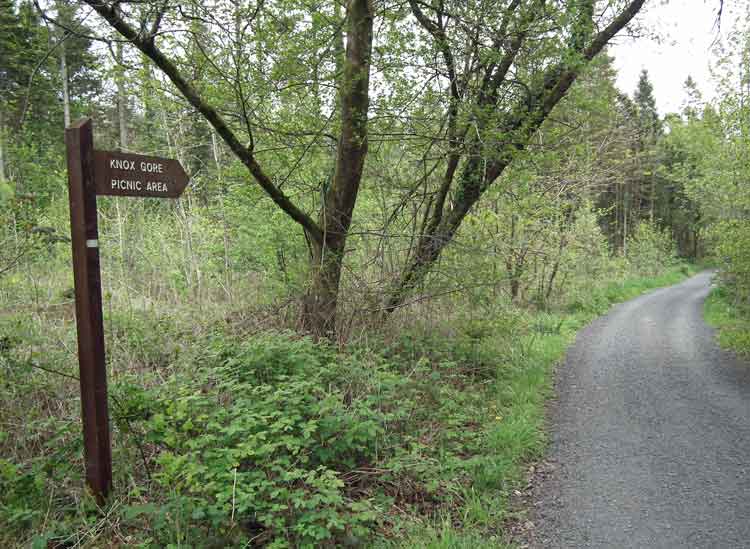
You can also branch off along Pine Avenue and walk through the forest of conifers and native broadleaf trees, including Yew trees, the tree from which County Mayo derived its name (Maigh Eo, meaning “Plain of the yew trees”).
The wood’s lovely restored picnic area, overlooking the river, is perfect on a summer’s day where you can enjoy refreshments at one of the picnic tables.
Over the years, under the direction of Coillte, who work closely with the Belleek Wood Enhancement Committee, the wood has been managed and developed into an award-winning parkland recreation area that has something to offer anyone who enjoys the outdoors.
The red squirrel, a protected species, was introduced to the wood in 2007 and is one of the forest’s biggest attractions. Belleek Wood is a perfect home for graceful creatures because its biggest competitor, the grey squirrel, does not inhabit the woodland.
Other wildlife to inhabit the wood includes hedgehogs, badgers, foxes, pine martens, and stoats, and along the river bank, you can sometimes see otters and seals.
Belleek’s colourful history

Belleek Wood has a colourful history mainly due to the eccentricity of its original owners, the Knox-Gore family, who are fondly remembered by many of the older generations in Ballina.
One of the strangest stories relates to Sir Francis Arthur Knox-Gore who is buried, reputedly with his beloved horse, in a Hiberno-Romanesque architectural style mausoleum in the wood, not far from Belleek Castle.
Known colloquially as “The Horse’s Grave”, the mausoleum was commissioned by the second Baronet, Charles James Knox, who is also buried in the woodland.
Charles James Knox died on December 22, 1890, and was buried, at his request, in the estate’s Custer Garden, next to the River Moy.
Thanks to the voluntary work of the Belleek Wood Enhancement Committee under the auspices of Coillte, the history of Belleek Wood has been given a new lease of life.
Extensive restoration work on the historical features along with information boards at various locations such as the hermitage, mausoleum, and the Famine Wall ensure future generations will have an insight into Belleek’s rich heritage.

One of the best Belleek “landmarks” is the Creteboom, the disused concrete boat that was bought in 1937 by the Ballina Harbour Commissioners with the intention of sinking it, and a number of other vessels, at the entrance to the river Moy to act as sand-stops to ensure an open channel for shipping.
The ship sustained damage in a storm while moored at Ballina Quay, and, as it was been towed away, it foundered in mid-channel. It was moved to the west bank of the river in 1974.
It is now believed the Creteboom is the only remaining concrete ship of the 12 constructed in 1917 during the height of World War 1 when there was a shortage of steel. The vessel was built by John Ver Mehr and Co Shoreham-by-Sea, Sussex, for the British Ministry of Shipping.
Belleek Wood, as we know it today, began its life in the 1800s when the Knox Gore family began to plant around their home Belleek Manor – now a popular hotel.
However, a large section of old woodland is made up of rare forest habitats that date back thousands of years and still contain much of the flora and fauna associated with these ancient woodlands.
Belleek is derived from the Irish ‘Beal-Leice’ which means ‘the mouth of the Flagstones’, which refers to an early crossing point on the River Moy.
Spanish Armada Museum
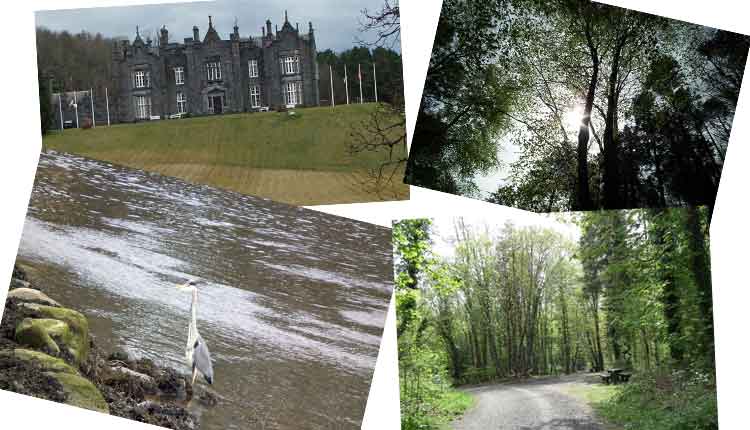
And, looking to the future, Belleek will have even more to offer as a recreational amenity.
It is the local trailhead for the Ballina to Killala Walking and Cycling Greenway; and Belleek Castle’s protected courtyard buildings now house a museum showcasing a unique collection of fossils, armoury, and artefacts from the Spanish Armada and the French invasion of 1798.
It’s great to know that Ballina people will be still “going down Belleek” for many generations to come.

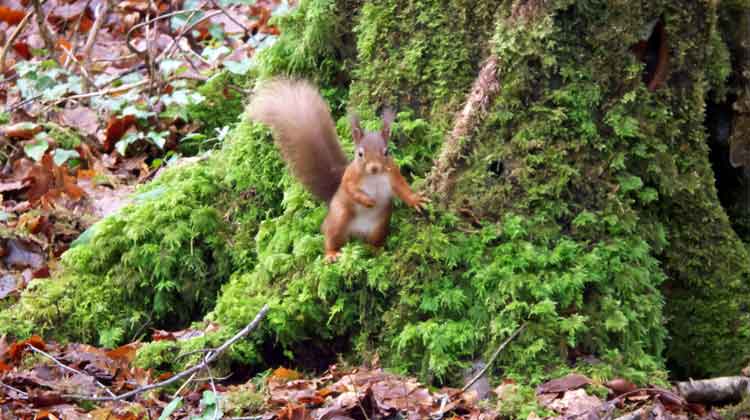
8 replies on “Belleek Wood – Mayo’s best forest park”
My childhood and teenage years were spent going down the woods. We played everything from Tarzan to Cowboys and Indians. We even did some “Courting” in our teenage years in the “Palm Trees”. Memories of a misspent but fun youth. Love this article.
LikeLike
Thanks Eamon. We all have happy memories of days down the woods and playing Cowboys and Indians, Robin Hood etc., usually with rival “gangs” from some other part of town!
I don’t think The Palms”, as we called them, exist any longer – and certainly the “Bamboo Woods” were felled to make way for the Coca Cola complex.
LikeLike
You say the Knox Gores started planting in the seventeenth century around the manor, but the manor wasn’t built till the 1830s. I know there was an older castle closer to Ballina on the river, but was there a manor on that site previous to the 1830s?
LikeLike
Thanks for pointing out the tpyo which should have read 1800s and not 1700s.
According to the Belleek Castle website, Belleek Castle was built between 1825 and 1831, on the site of a medieval abbey.
LikeLike
Lovely to read. My parents-in-law both worked in The Manor in the late 1930s onwards. He, on the land and tree planting, and she, in the house. Lovely to read the real history. They were both so busy they never told us any stories or history. Thank you.
LikeLike
I am from Claremorris, but living in the UK since 1969. I found this article really interesting and enjoyable and now cannot wait ’til my next visit home.
This is already on the top of my list of places to visit. Thank you so very much for your wonderful post!
Kindest regards,
Angela Bowler
LikeLike
The Jack Fenn Cafe in the Courtyard of the Castle and open to the public is a great addition to the woods, Plenty of parking there and lovely place to have a coffee or meal after a walk in the woods. The daily tours of the castle are also fascinating. Marshall Doran amassed such a collection of interesting artifacts.
LikeLike
The strange mausoleum was built by my great-great-grandfather, the architect James Franklin Fuller. I intend to go and see it on my next visit to Ireland. Sir Francis’s wife, Sarah, died on 8 May 1888 and was also buried there in a private funeral held at 4 in the morning!
Teresa, thanks for sharing their information with us.
James Franklin Fuller (1835–1924) was a great Irish architect. He also designed Mount Falcon Castle, Ballina, Errew Grange, Crossmolina and Ashford Castle in Cong.
Anthony Hickey
LikeLike